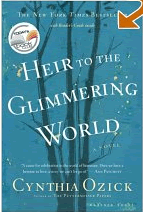In creating my current “recently read” list today, I noticed an oddity in my reading choices…
Previously, my reading list included The Sonambulist, and a few years back, one of my very favorite books was The Intuitionist. I also recently enjoyed The Illusionist on DVD.
I know there’s at least one other “-ist” title in my “recently read” list, but when I started to go back and look for it, I realized I have 11 years worth of book lists to look through, and I decided I was too lazy for that. You’d think I’d keep a running list after all these years, but, well, refer to previous sentence re: lazy.
“The suffix -ist is used to denote a person who either practices something or a person who is concerned with something or a person who holds certain principles, doctrines, etc.”
Yes, well people seem to like to write lots of books about such people, don’t they? I have not read The Alchemist, or The Alienist, but I’m not going to be compulsive about it and put them on my “to read” list. The first doesn’t interest me, and the second I heard about from others and I’m pretty sure I might not like it.
The Impressionist is on my bookshelf now, and I’ll probably give it a read.
Given the prominence of the suffix in published works, I thought I might title my own future novel with an “-ist” ending, so I began reading through 1201 such words.
Alas, both The Balloonists, and The Little Balloonist are taken, so it seems that non-engine powered aeronautics covered.
I could go with the Anarchist – there doesn’t seem to be a novel by that name, although there is a Cookbook, and apparently, they are in the Library of late. (that last one is on my reading list, BTW. The first is probably going to get me on watchlists just for linking.
So, how about the Aviarist, or The Bronchioscopist? Well, maybe not that last one. That sounds a bit squishy. The Anecdotalist? That sounds a bit like Auntie Gert telling stories with endless tangents and no endpoint.
An “aquarellist” is a person who paints water colors.
A “cinquecentist” is a poet or artist in 16th century Italy. Both would require me to do research. See: lazy.
The Deconstructionist! Ugh. I think I’d rather shoot them that write about them.
The Fabulist — I think that’s it. Yes, the Fabulist. Damn it — that’s already written. And about that fine fellow Stephen Glass, too. That title almost makes him seem whimsical.
A Feist is a small dog – or a singer whichever you prefer.
A funambulist is a tight-rope walker.
Where the hell am I in this list? F? This could go on forever. or perhaps all the way to
Z. Best quit now.
la·zy·ish: \-zē-ish\ adjective – a: disinclined to activity or exertion : not energetic or vigorous. Indolent, Slothful.




